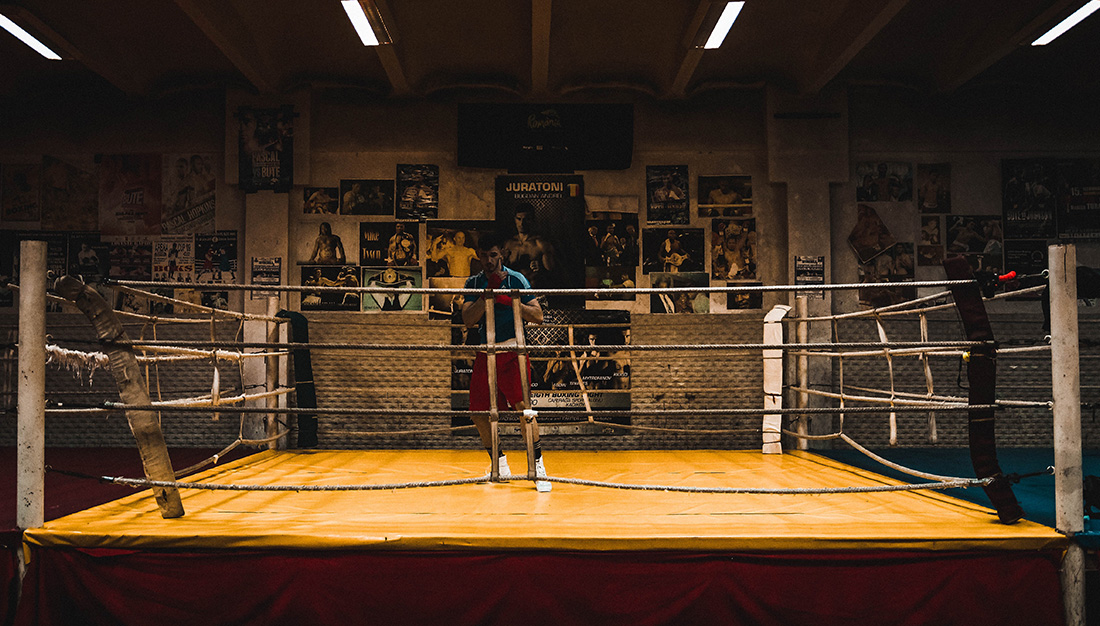
Many of us live in an exercise zeitgeist where enclosed spaces with mirrors, barbells, and treadmills are the only place where health improvements are made. This couldn’t be farther from the truth. In reality, high levels of informal physical activity are what really drive robust changes in health1.
The world is our gym playground, and if we can wrap our heads around that, then our health will take care of itself. Structured exercise, like a gym training session, certainly has its place in a well-rounded health and performance routine. But rather than mindlessly elliptical-ing our way into near-death, structured exercise should serve as body maintenance; a list of must-do’s that are essential to being a functional human, similar to a standard evening routine of brushing and flossing. Informal physical activity (in conjunction with nutrition and stress management) should be our main strategy for lasting improvements in health 1.
Human beings are designed to constantly be on the move, and our failure to do so has resulted in an (underdiscussed) global pandemic of obesity, heart disease, metabolic dysfunction, depression, and anxiety. Our physiology is tailored for constant movement, while the status quo of modern living has normalized the morbidly sedentary lifestyle2. The path then to reclaim our health is to turn away from the couch potato life and behave in a more biologically normal way: By engaging in constant informal physical activity. But don’t get it twisted, constant physical activity doesn’t mean that we should be spending hours performing squats and burpees. Quite the opposite actually. Constant physical activity means that we fidget, walk, and play our way to better fitness rather than self-flagellating through excessive barbell deadlifting and treadmill running. It sounds simple and easy, as it should be.
From a scientific standpoint, informal physical activity is synonymous with the concept of non-exercise activity thermogenesis, or NEAT. NEAT can be responsible for over half of the calories we burn in a day – thousands of calories, even1, 3! Compare that to a structured 40-minute resistance training routine, which may only account for a few hundred calories burned at best. And that’s not to say that resistance training isn’t important, it is and as a matter of fact it’s absolutely necessary for body maintenance. But if [metabolic] health is the goal, then constant physical activity trumps formal exercise. Furthermore, building a large aerobic base through tons of NEAT is science-talk to say that physical activity upgrades the engine that drives our bodies4.
The benefits of NEAT extend beyond metabolic health too. Shorter and more consistent doses of low to moderate-intensity activity optimizes our hormones5 by giving us a steady drip of intrinsic feel-good drugs such as epinephrine, norepinephrine, serotonin, dopamine, and acetylcholine, while minimizing the chronic stress hormone related to disease: Cortisol6. Avoiding excessively intense, long-duration activity like that of a standard gym session also improves immune function as it leaves a buffer for our immune systems to deal effectively with viruses and other pathogens 7, 8, 9. That’s right, constant physical activity will improve immune function better than formal exercise. The benefits don’t end there though (I understand that this is starting to sound like a late night infomercial, but unlike the ShamWow, NEAT isn’t too good to be true). NEAT leads to improved cognitive performance by increasing levels of brain-derived neurotrophic factor in the brain10 – learn better, think better, and ultimately be a better friend, parent, or spouse by moving more! So once again, daily informal physical activity should be our main modality for improving health.
Now how do we go about skyrocketing our levels of informal physical activity without quitting our day jobs to become physical activity vagabonds? The key is to shift away from the outdated mindset that the gym is the only place for movement, and to incorporate the following easy-to-implement lifestyle changes that promote physical activity and play over structured, formal exercise:
- Find an activity you enjoy doing, and do it often. Forget 30-day cleanses or fad workout programs – consistency is the real key to lasting changes in health11. And the more you engage in physical activities that you truly enjoy, the more consistent you’ll be. So whether it’s hiking, kickboxing, dancing, weight training, or soccer, get out there and find a physical activity that you can do for the pure, unadulterated joy of doing it!

- Walk more! From an evolutionary perspective, our muscles, joints, and connective tissues were adapted for the purposes of walking and running12. In other words, walking often is part and parcel of being a human being. It’s also a great excuse to get outside more, which sets off a whole ‘nother cascade of positive health effects. So lace up the shoes and go for that 10-minute morning walk in favour of the morning social media addiction, leave the car on the outside edges of the parking lot, and forego the elevator for the stairs. Besides, convenience is overrated and is the reason why we’re experiencing a global (obesity) pandemic in the first place.
- Set movement challenges to perform during the day. One of my favourite challenges is the 30/2 deskwork rule13 where I get up and move around for 2 minutes for every 30 minutes of time spent performing seated work; anything goes during those 2 minutes, I can stretch, walk around, or do anything else that intuitively feels good. Another great movement challenge is the bathroom break rule where I perform a predetermined exercise before entering the bathroom to do my business. As an example, I might rig up a pull up bar on the doorframe and bang out 5 pull ups before I take a piss (pull ups or kidney stones, your choice), or I might simply do 15 jumping jacks before getting in for a shower.
- Create a physical activity-friendly environment at work and at home. Set up a standing desk at home to promote better orthopedic and metabolic health – this simple change can be one of the most effective hacks for nipping joint pain and fat gain in the bud13. At home you can move the furniture around so that there are open spaces to sit on the floor, stretch, foam roll, or play your way to better health. Many people have multiple chairs and couches but only take up their one specific seat on that one specific couch. If that’s the case for you, then go ahead and move that extraneous furniture out of the way to promote a movement-rich environment!
There is absolutely a time and a place for structured exercise. The individualized programming of mobility, stability, and strength training are imperative for rounding off a complete fitness program. But if the goal is to create lasting health changes, then increasing levels of informal physical activity should be the main priority. It’s more effective in that it promotes an active lifestyle rather than the ineffective model of going-to-the-gym-for-an-hour-followed-by-23-hours-of-potato. It’s also more enjoyable which ultimately results in long-term physical activity adherence. Enough reading, get up and start moving!
Pat Koo
BKin, CSCS
Further Reading:
- Levine, J.A. (2002). Non-exercise activity thermogenesis (NEAT). Best Practices and Research in Clinical Endocrinology and Metabolism, 16(4), 679-702.
- Liebermann, D. E. (2014). The story of the human body: Evolution, health, and disease. Vintage.
- Levine, J.A., Vander Weg, M.W., Hill, J.O., & Klesges, R.C. (2006). Non-exercise activity thermogenesis: The crouching tiger hidden dragon of societal weight gain. Arteriosclerosis, Thrombosis, and Vascular Biology, 26(4), 729-736.
- Willis, L.H., Slentz, C.A., Bateman, L.A., Shields, A.T., Piner, L.W., Bales, C.W., Houmard, J.A., & Kraus, W.E. (1985). Effects of aerobic and/or resistance training on body mass and fat mass in overweight or obese adults. Journal of Applied Physiology, 113(12), 1831-1837.
- Hill, E.E., Zack, E., Battaglini, C., Viru, M., Viru, A., & Hackney, A.C. (2008). Exercise and circulating cortisol levels: The intensity threshold effect. Journal of Endocrinology Investigation, 31(7), 587-591.
- Skoluda, N., Dettenborn, L., Stalder, T., & Kirschbaum, C. (2012). Elevated cortisol concentrations in endurance athletes. Psychoneuroimmunology, 37(5), 611-617.
- Walsh, N.P. (2018) Recommendations to maintain immune health in athletes. European Journal of Sport Science, 18(6), 820-831.
- Nieman, D. C. (2009). Immune function responses to ultramarathon race competition. Med Sportiva,13(4), 189-196.
- Moreira, A., Delgado, L., Moreira, P., & Haahtela, T. (2009). Does exercise increase the risk of upper respiratory tract infections? British Medical Bulletin, 90, 111-131.
- Szuhany, K.L., Bugatti, M., & Otto, M.W. (2016). A meta-analytic review of the effects of exercise on brain-derived neurotrophic factor. Journal of Psychiatric Research, 60, 56-64.
- Miller, F.L., O’Connor, D.P., Herring, M.P., Sailors, M.H., Jackson, A.S., Dishman, R.K., & Bray, M.S. (2014). Exercise dose, exercise adherence, and associated health outcomes in the TIGER study. Medicine and Science in Sports and Exercise, 46(1), 69-75.
- Myers, T.W. (2014). Anatomy Trains: Myofascial Meridians for Manual and Movement Therapists. Elsevier Canada.
- Starrett, K., Starrett, J., & Cordoza, G. (2016). Deskbound: Standing Up To a Sitting World. Victory Belt Publishing.

